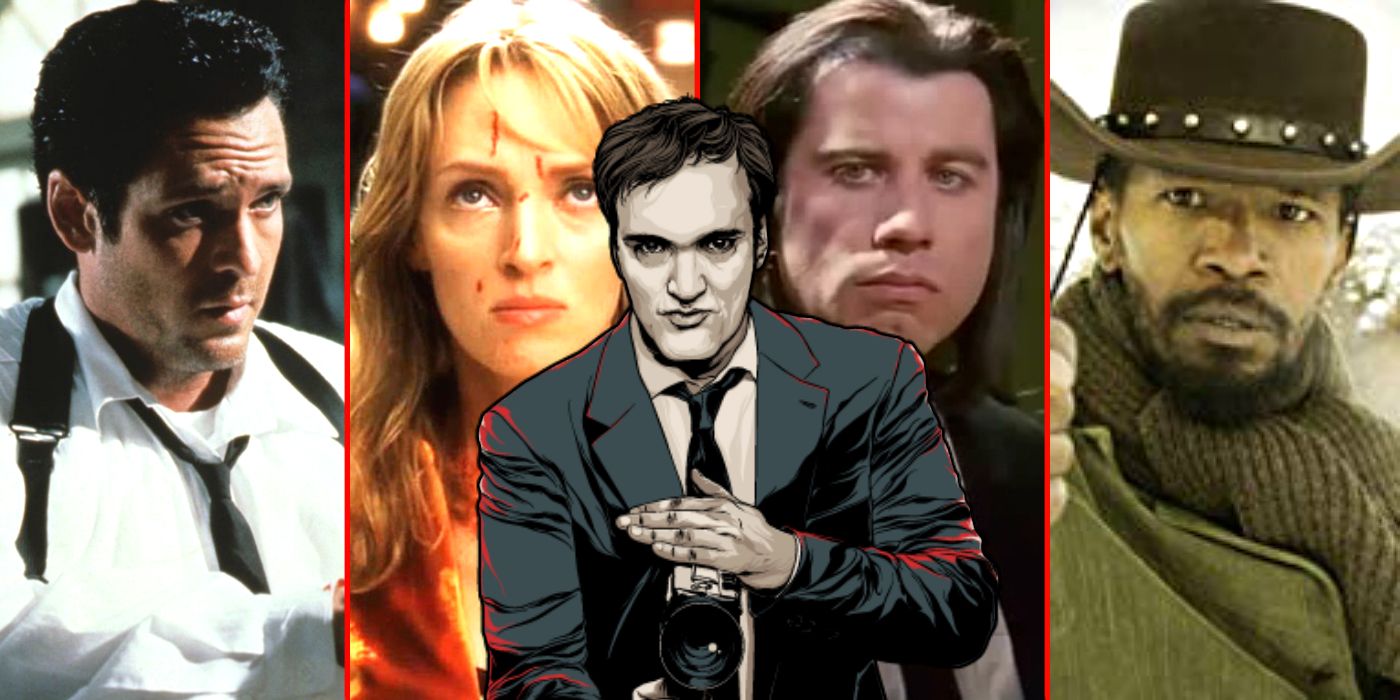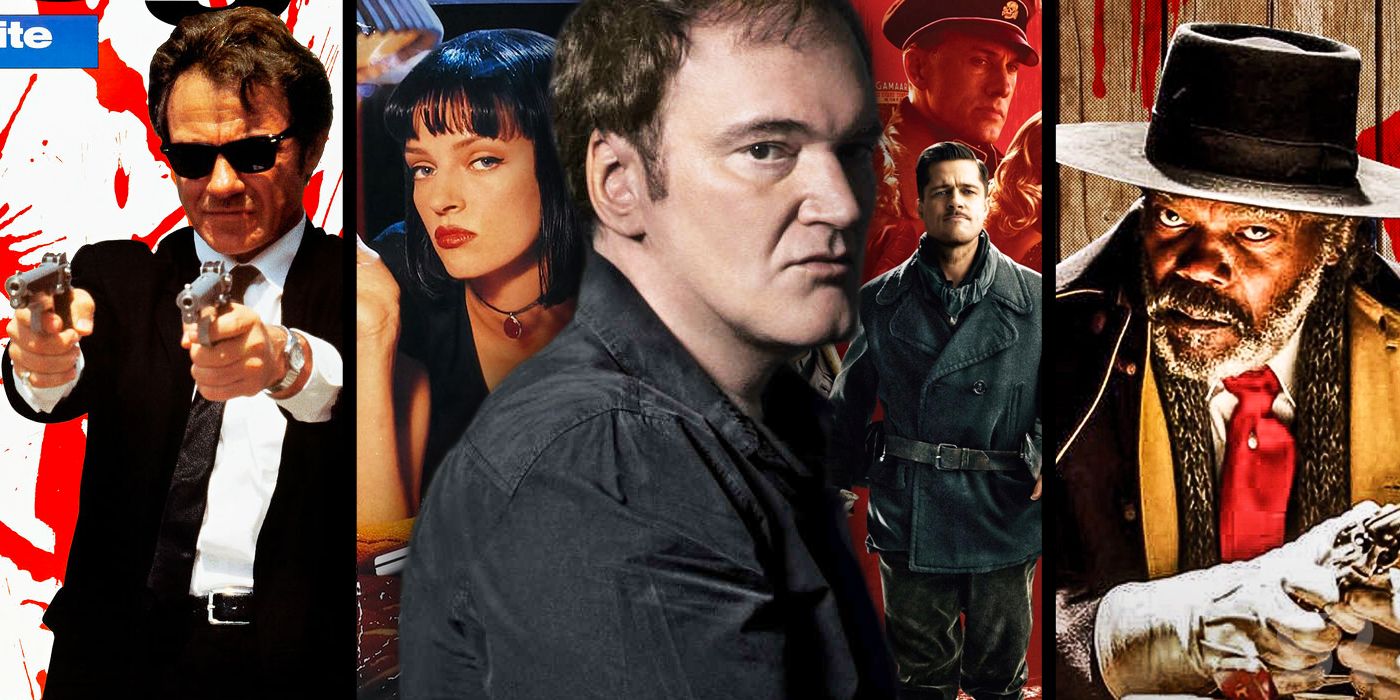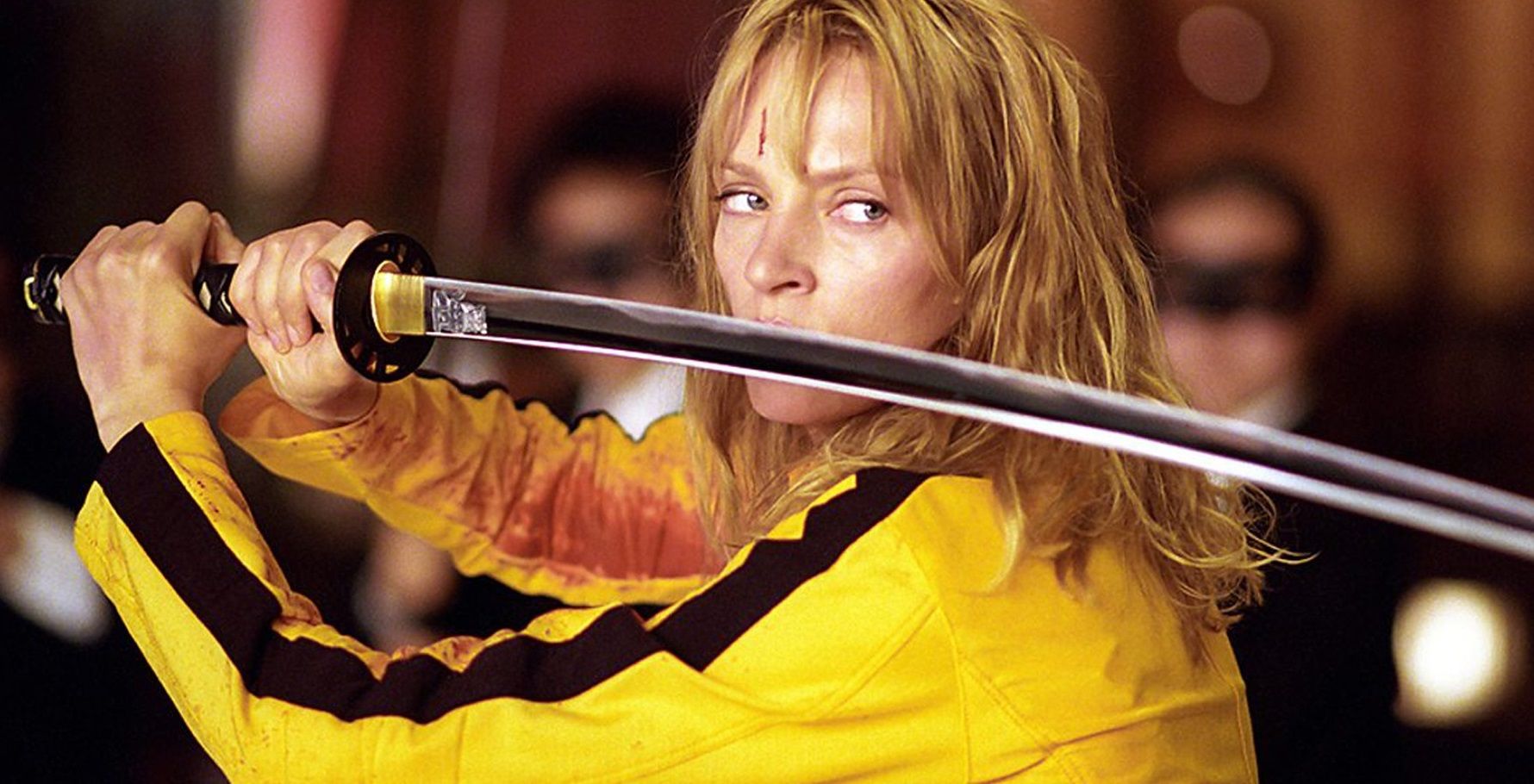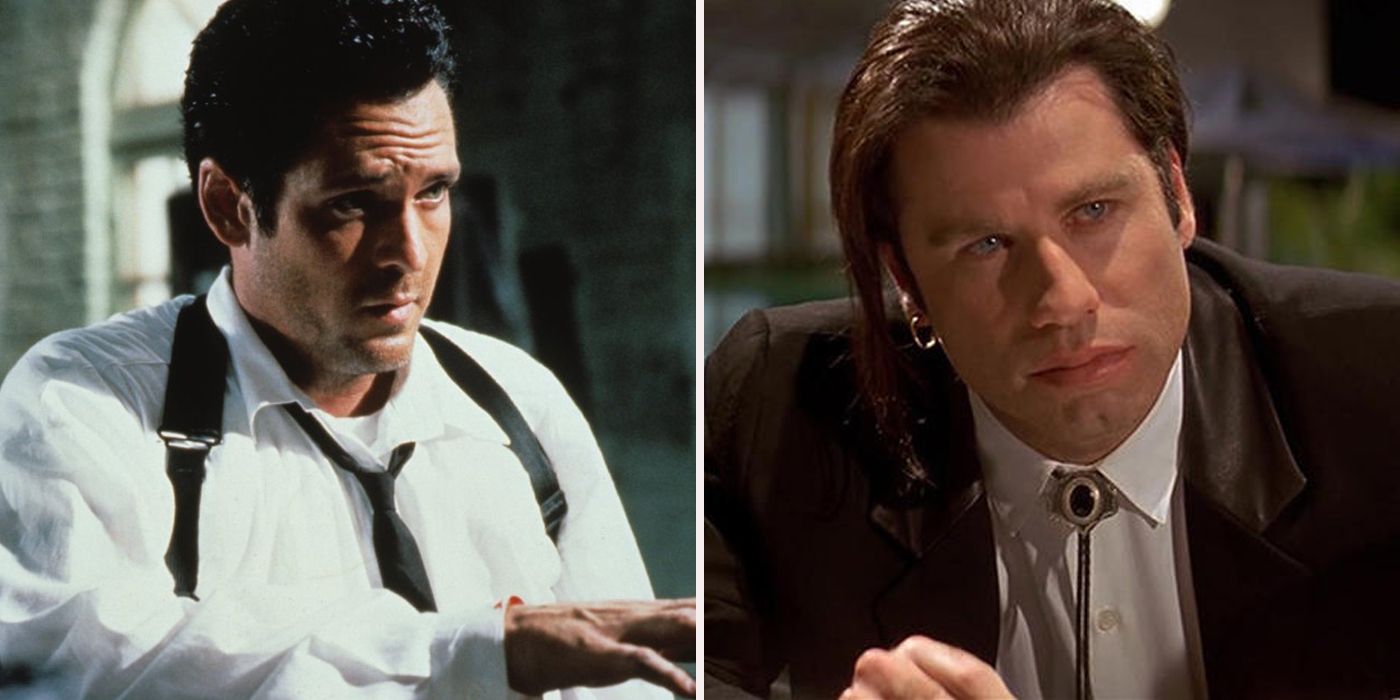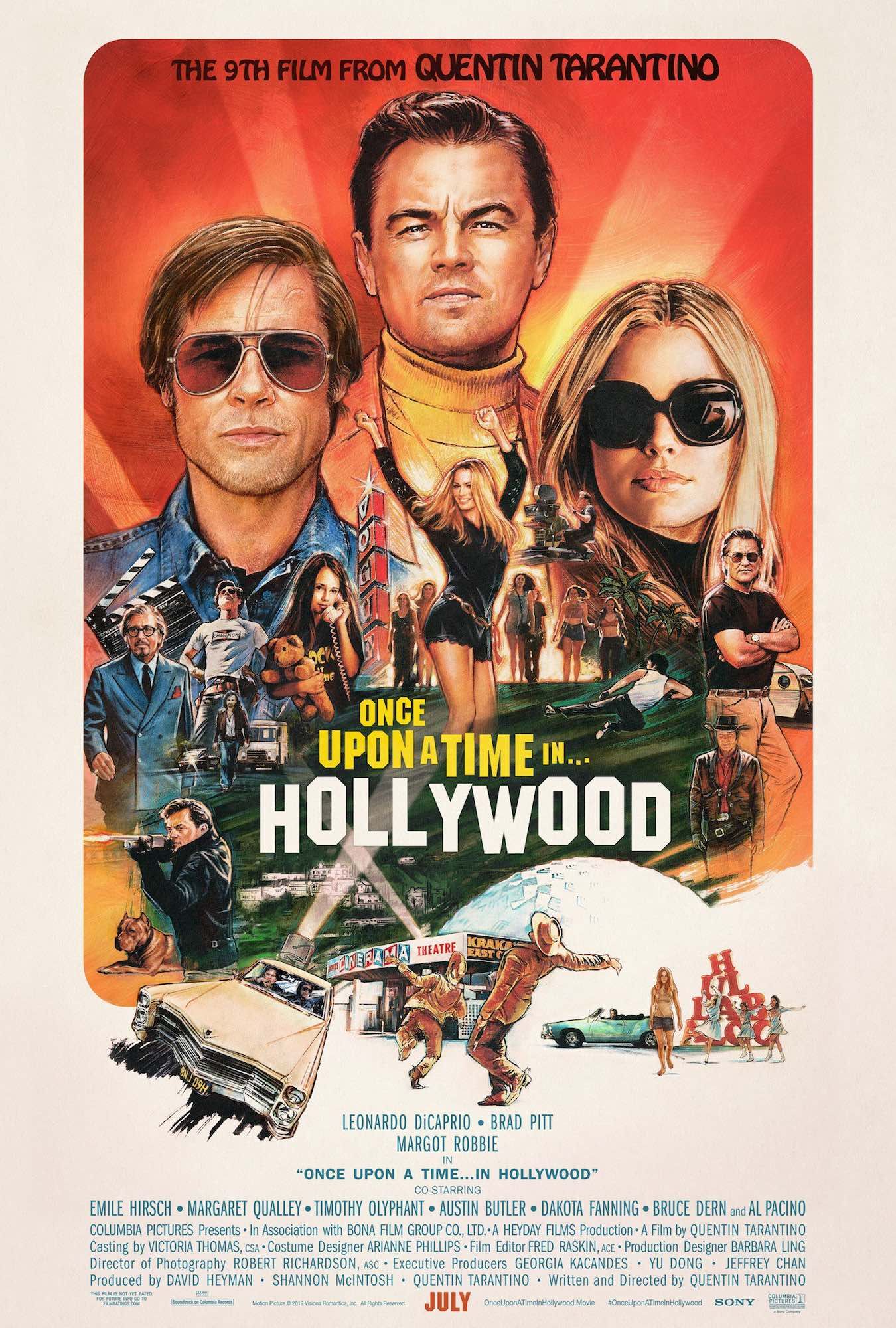Quentin Tarantino's movies all exist in a shared universe, but how exactly do they connect up? Although shared universes are more commonly associated with the likes of the MCU and DCEU, Tarantino fans long theorized that each of his films existed in one world, with a number of Easter eggs and references linking his movies.
This was eventually confirmed by Quentin Tarantino himself back in 2016, but even then it wasn't quite so simple as there being just one Tarantino movie shared universe. That would likely be too easy for a director as involved in his filmography as Tarantino, so he instead has two strands to the movie universe, one existing inside the other.
With Tarantino returning to cinemas thanks to the impending release of Once Upon A Time In Hollywood, we have not only his 9th film but the latest entry into an already complex shared universe. From the main movie universe to the movies-within-movies and the various characters were are actually related to each other, this is how the Tarantino movie shared universe connects up.
Quentin Tarantino's Main Movie Universe
The first strand of Quentin Tarantino's movie shared universe is the one in which most of his movies exist, about which Tarantino himself said: "There's the realer than real universe, alright, and all the characters inhabit that one." So far, that's straightforward enough: all of Tarantino's movies inhabit one shared world, which includes alternate versions of history like the death of Adolf Hitler in Inglourious Basterds.
Tarantino's main movie universe is the biggest, and features the majority of his films, including Reservoir Dogs (1992), Pulp Fiction (1994), Inglourious Basterds (2009), Django Unchained (2012), and The Hateful Eight (2015), and it appears as though this is where 2019's Once Upon A Time In Hollywood will fit as well. On top of these, this universe also includes some films Tarantino wrote but didn't direct, such as Tony Scott's True Romance (1993).
In these movies, the world operates a lot like the real one, where fictional characters can interact with real ones (the presence of figures such as Sharon Tate, Charles Manson, and Bruce Lee in Once Upon A Time In Hollywood, for example). In terms of timeline, it begins with Django Unchained and moves forward from there. Tarantino characters who exist in the "realer than real universe" can't appear in the movie-in-a-movie universe.
Quentin Tarantino's Movie-In-A-Movie Universe
Within Tarantino's shared movie universe, there is a subsection of movies-within-movies, which Tarantino describes as: "...There's this movie universe. And so From Dusk Till Dawn, Kill Bill, they all take place in this special movie universe. So basically when the characters of Reservoir Dogs or Pulp Fiction, when they go to the movies, Kill Bill is what they go to see. From Dusk Till Dawn is what they see."
This is something fans had started seriously speculating on when Kill Bill was released, because the plot closely mirrors a TV pilot described by Uma Thurman's Mia Wallace in Pulp Fiction. She tells Vincent Vega (John Travolta) about a pilot she was shooting, where she played "the deadliest woman in the world with a knife," which fits with the Bride, while she also outlines Elle Driver, O-Ren Ishii, Vernita Green, and Sofia Fatale. Clearly, within the realer than real universe, the pilot failed but ended up becoming a movie instead.
Tarantino's movie-in-a-movie universe contains some of his directorial efforts, including Kill Bill Vol. 1, Kill Bill Vol. 2, and Death Proof, as well as other movies he's been involved in as a writer/producer, including From Dusk Till Dawn and Planet Terror. Characters within this universe can appear in multiple movies, i.e. a character from Kill Bill could show up in Death Proof, but - with a couple of exceptions - can't appear in the real universe.
Character Connections In The Quentin Tarantino Movie Universe
With such a sprawling shared universe - or universes - it's no surprise that a lot of characters are all connected in the great circle of Tarantino. This first became apparent with True Romance, which introduces us to the character Alabama Whitman. In Reservoir Dogs, Mr. White discusses working with a girl named Alabama, so True Romance establishes the first bridge between Tarantino's movies (Alabama's surname is even Whitman, i.e. White Mr, because Tarantino does not do subtlety). Alabama sells drugs to movie producer Lee Donowitz, who is the son of Sgt. Donny Donowitz, a.k.a. The Bear Jew, from Inglourious Basterds.
Pulp Fiction then further expanded this through Vincent Vega, a surname that might've been familiar because it was already given to Reservoir Dog's Vic, better known as the ear-cutting Mr. Blonde (Michael Masden). Both characters are shown to have similar dancing styles, and while both end up dead, Tarantino considered making a Vega Brothers movie at one point, which would've been a Pulp Fiction prequel.
That's not the only link between Reservoir Dogs and Pulp Fiction. Mr. White's real name is Larry Dimmick, and later in Pulp Fiction we find Jimmy Dimmick, played by Quentin Tarantino himself, with it widely believed that they're brothers. An added meta-touch to that is the fact Jimmy's appears in Pulp Fiction with Winston Wolf, played by Harvey Keitel, who starred as Mr. White in Reservoir Dogs. There are still even more brothers in Tarantino's shared universe. Seymour Scagnetti is introduced - but not seen - in Reservoir Dogs as Mr. Blonde's parole officer. In Natural Born Killers, we then meet Jack Scagnetti, a police officer who seems to share Seymour's ability to be utterly loathsome.
The original name for Seymour Scagnetti in Reservoir Dogs was Craig Koons, which Tarantino would later return to. In Pulp Fiction, Christopher Walken's ex-POW is called Captain Koon, and that's then referenced in Django Unchained where a wanted poster lists Crazy Craig Koons as part of the Smitty Bascall gang, with that Koons serving as the great-great-grandfather to Walken's. Another member of the Smitty Bascall gang is Gerald Nash, a name that also appears in Natural Born Killers when his death is recreated for a TV report on mass murderers. That's not the end of the Nash family though, as the man tortured by Mr. Blonde in Reservoir Dogs is called Marvin Nash.
Staying with Django Unchained, Christoph Waltz's character in that Tarantino movie is called Dr. King Schultz, whose wife is named Paula. In Kill Bill Vol. 2, the Bride is buried in a grave belonging to a certain Paula Schultz, dated 1823-1853, which puts it in the right timeframe to be Dr. Schultz's wife, although the fact Kill Bill is in the movie-in-a-movie universe complicates this somewhat. Tarantino often blurs the lines between his two movie universes, however, with some characters who can supposedly move between them. These include the Wolf (although he's only appeared in Pulp Fiction), Sheriff Earl McGraw (Michael Parks) and his son Edgar (James Parks), who appear in From Dusk Till Dawn, Kill Bill Vol. 1, and the Grindhouse movies.
In The Hateful Eight, meanwhile, we're introduced to hangman Oswaldo Mobray, otherwise known as English Pete Hicox. That name was familiar to Tarantino fans, because it's also used in Inglourious Basterds, where Michael Fassbender plays Lt. Archie Hicox, the great-great-grandson of English Pete. And going back to Django Unchained, there's a character who suggests he is a Maynard while using a racist expletive, likely meaning the Maynard in Pulp Fiction is his descendent.
These connections between Quentin Tarantino's movies aren't simply limited to characters, however, with some brands also appearing in multiple Tarantino movies. Big Kahuna Burger, a Hawaiian-themed burger chain, it appeared in From Dusk Till Dawn, Reservoir Dogs, Pulp Fiction, and is mentioned in Death Proof, meaning it exists in both Tarantino shared universes. Red Apple cigarettes, meanwhile, appear in From Dusk Till Dawn, Pulp Fiction, Kill Bill Vol. 1, Grindhouse's Planet Terror, Inglourious Basterds, The Hateful Eight, and Once Upon A Time In Hollywood. Finally, there's G.O. Juice, which appears in Kill Bill Vol. 1 and Death Proof.
The exception to the Tarantino shared movie universe is Jackie Brown, which doesn't take place in either of these, but instead exists in the Elmore Leonard Universe alongside Steven Soderbergh's Out Of Sight. Other than that, however, then there are two different universes and multiple films making up the Quentin Tarantino movie shared universe, which is only set to get bigger with Once Upon A Time In Hollywood, but let's not even begin to think of how Tarantino's Star Trek movie might fit in.

